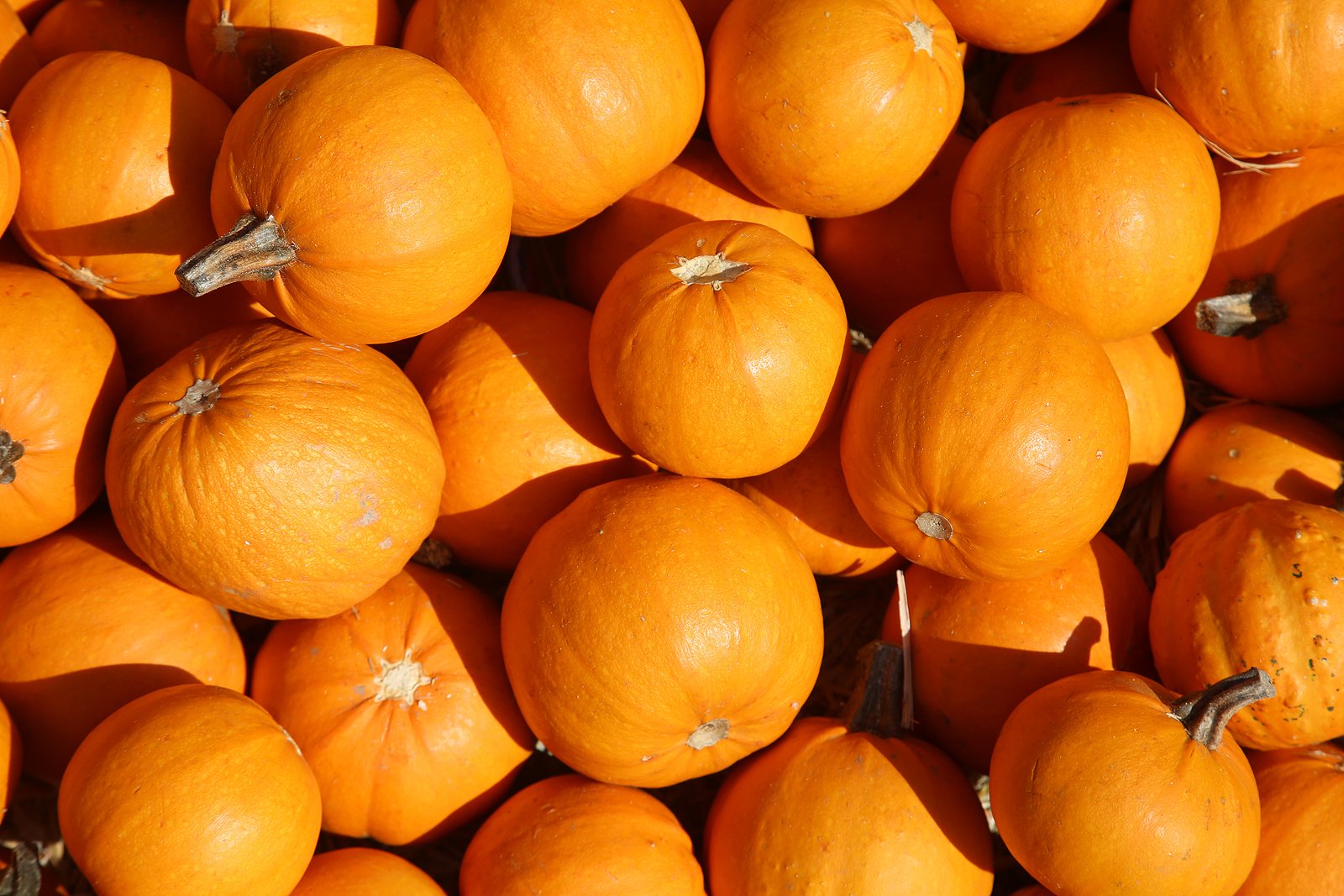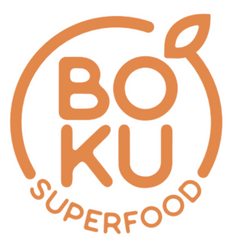
Most people agree that the pumpkin spice this and that craze has gotten out of hand. When coffee shops introduce pumpkin spice lattes (PSLs) during prime beach season, before kids are in school, that’s taking the trend a little off the crazy rails.
Besides PSLs, the main association with pumpkins is pie. And that’s a shame because this fruit—yes, it’s botanically, technically a fruit, not a veggie—deserves to be placed on the A-list superfood pedestal, right up there with leafy greens, cruciferous veggies, exotic Amazonian fruits, algae, mushrooms, adaptogenic herbs, and the other categories of superfoods contained in our award-winning green powder.
Is Canned Pumpkin Healthy?

Before making the case for pumpkin as a superfood, answer the following: When you think of pumpkins, what comes to mind, outside of jack o’lanterns, PSL’s and pie? For most people, it’s either pumpkin seeds or the canned fruit sitting on supermarket shelves. Let’s focus on the latter first...
Canned food has a bum nutritional rap. That’s because most foods that come from a can are preserved, contain a lot of sodium, and the can itself may contain the cancer-causing chemical, Bisphenol A (BPA). Approximately 10% of canned foods contain BPA, which can leach out of the lining of the can into the food. To determine if a canned food may contain BPA, look at the recycling number. If it says #7 it may contain BPA. Canned food may also contain botulism, a toxin that attacks the nerves.
Does that whet your appetite for some canned pumpkin? While BPA and botulism are real threats lurking in cans, pumpkin is the one exception that should be made when it comes to eating canned food.
How can you tell if a can is BPA-free? Unfortunately, just because a can is labeled “Organic” and “non-GMO” doesn’t mean it’s BPA-free. So you have to be diligent and read the recycling labels. Brands of organic canned pumpkin will advertise “BPA-Free Liner” prominently on the can.
Pumpkin Nutrition Facts: It’s “A” Superfood!
The easiest way to get the benefits of pumpkins in your diet is by eating it from a can, as unhealthy as that may sound to someone who is used to eating the world’s most organic, nutrient-dense superfoods in a compostable pouch.
If you don’t want to eat canned pumpkin, stay tuned, because we’ll reveal an easy way to grow your own pumpkin sprouts, which may be even healthier than canned pumpkin.
The superfood nutrition facts start with the letter A. Pumpkin is one of the richest sources of vitamin A. Along with spinach and sweet potato, it’s the top plant-based source of A. This nutrient, says a fact sheet provided by the National Institutes of Health, is essential for a healthy immune system, vision, reproduction (if that’s an area of concern to you) and cell-to-cell communication.
A half cup of canned pumpkin contains an incredible 380% daily value of vitamin A, which helps you see better because it’s part of a protein that absorbs light in the retinal receptors. It also supports the functioning of the cornea and conjunctival membranes.
More accurately, pumpkin contains lots of provitamin A. Unlike animal sources of vitamin A (preformed vitamin A), plant pigments such as beta carotene have to be converted into vitamin A. The more beta carotene a food has, the more vitamin A will be stored in your liver, which will benefit the health of your organs.
And this is another selling point for canned pumpkin: besides being easy to prepare, it contains more bioavailable beta-carotene than fresh gourds, meaning that it’s easier for your body to absorb, and more efficient at converting this carotenoid into usable vitamin A.
More Reasons To Fall In Love With Pumpkin, Not Just In Fall
Whether you’re eating fresh pumpkin, canned pumpkin or “pepitas” as the seeds are called, the edible portion of the plant is high in fiber, which helps feed the good bacteria in your gut. Pumpkin is also high in vitamins K, E, C, B5 and the minerals, iron, manganese, magnesium, copper, potassium and zinc. There’s also a decent amount of omega-3 and omega-6 essential fatty acids.
In other words, eating pumpkin is like taking a daily multivitamin.
From a therapeutic perspective, pumpkin seeds have been touted for urinary tract health and erectile dysfunction (ED). In a study published in a urology journal, men with enlarged prostate glands who consumed pumpkin seed (or pumpkin seed extract) experienced a significant reduction in symptoms. As for improving ED, one study shows that seeds improve some markers such as improved blood flow—in rats.
Obviously, prostate health and ED are male health concerns. So what about the benefits for ladies? Well, one way in which seeds can improve female health derives from the high magnesium content. With adequate magnesium intake, females are at a lower risk of developing osteoporosis after menopause. An observational study also suggests that eating the seeds is associated with a lower risk of breast cancer.
There are way more benefits, but with the score tied 2-2 for boys and girls, let’s move on to what may be even better than eating pumpkin seeds…

Superfooding a Superfood By Sprouting
BōKU Superfood Powder contains 7 types of sprouts: Organic Flax Sprouts, Organic Pumpkin Sprouts, Organic Broccoli Sprouts, Organic Cauliflower Sprouts, Organic Kale Sprouts, Organic Cabbage Sprouts, Organic Red Clover Sprouts.

Why did we add Pumpkin Sprouts to the powder formulation instead of dehydrating canned pumpkin?
The answer is that sprouting increases your ability to absorb the superfood nutrients even more! Plus, sprouts actually contain higher levels of certain nutrients like B vitamins because they are so young. Like with any other type of produce, the longer something sits on the shelf, the less nutritious it is. Sprouts are prime for the picking, containing up to 100 times the beneficial enzymes that help you better digest your food.
So what are sprouts? Also called “microgreens,” they’re “shoots” of young plants born from germinated seeds; it’s the newborn phase of a plant growing into a vegetable. Germinated pumpkin seeds turn into sprouts before they develop into fully developed pumpkin fruit. Typically, sprout shoots are split in two leaves, and begin to shoot about a week to 10 days after planting.

If you live in a really frigid winter environment where it’s impossible to grow greens outdoors, sprouts are a godsend.
How to Make Pumpkin Sprouts
It’s really easy to make your own according to this gardening resource. First, soak pumpkin seeds in warm water for a few hours. Next, lay them flat on a paper towel to drain excess water. Rinse the seeds every day and do nothing else until the seeds start to break open. Very soon after the seeds open, the sprouts will shoot and they’ll be ready to eat.
Of course, the easiest way to consume pumpkin sprouts—and 54 other superfoods at one time—is with the best organic superfood powder on the market.

